As we mentioned in the introduction, the BioWall was designed with
a specific application in mind: the realization of ontogenetic machines
as defined by the specifications of the Embryonics project. However,
the capabilities of the BioWall are not limited to this application.
Its cellular structure is well suited to the implementation of all
sorts of bio-inspired applications and more. The following is a non-exhaustive
list of applications that have been realized on the BioWall.
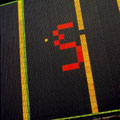
|
Counter
In this first experiment, the BioWall is a bio-inspired timer. The visitor is
invited to "kill" one or more molecules on the surface by simply
pressing down with his finger. The BioWall, just like
any living being, reacts in order to survive, replacing the dead molecules with healthy neighbors.
|
|
Life
The second experiment, named after the famous "Game of Life"
invented by John Conway, involves a colony of molecules. Each
molecule's existence depends on the number of living neighbours
it has. The visitor can give life to the molecules and observe
the evolution of the colony.
|
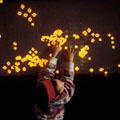
|
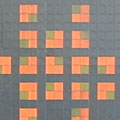
|
Loops
In this experiment, the visitor turns creator, causing the
development of elementary artificial organisms capable of
self-replicating. By simply pressing any "mother loop" molecule,
the visitor triggers the self-replication process and creates
a "daughter loop".
|
|
Turing Neural Networks
It was in 1948 that Alan Turing wrote "Intelligent Machinery",
a fascinating investigation of different connectionist models
that would today be called neural networks. In this
experiment, the visitor can create and activate neuron-like
elements on the BioWall.
|

|
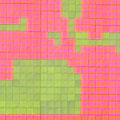
|
Firefly
In this experiment, the BioWall is an autonomous evolving
hardware system capable of solving the so-called synchronization
task in two dimensions. The visitor is invited to try
and disrupt the synchronization process.
|
|
Firing
Squad
In this experiment, the BioWall solves the synchronization
problem of any column of cells defined by the visitor.
The solution implemented on the BioWall achieves synchronization
in minimal time.
|
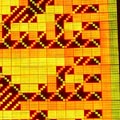 |
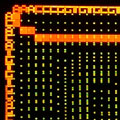
|
DNA Sequence Comparison
String comparison is a critical issue in many application
domains, including speech recognition, contents search, and
bioinformatics. In this experience we present a parallel implementation
of string comparison on the BioWall.
|
|
Camera
This experiment allows to display a video stream from a standard
web-cam on the BioWall. Colors are mapped into eight color-levels
(between green and red) to be compatible with the BioWall's LEDs.
|
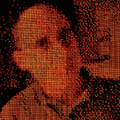
|
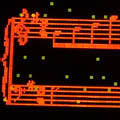 |
Music Box
In this application, the BioWall becomes a music box, playing
a minuet by J.S. Bach. The visitor can interact with the machine
by adding and removing the notes played with a simple pressure
on a membrane.
|
|
Ants
In this classic bio-inspired experiment, the BioWall becomes an entire ecosystem,
where a colony of artificial ants lives and evolves. The visitor
can create and destroy ants, and observe their behavior within the colony.
|
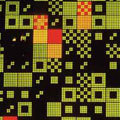
|
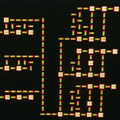
|
Von Neumann's Constructor
In the 1950's, John von Neumann developed a model, known as
the Universal Constructor, a cellular automaton that
became the basis for the greater part of the research on self-replicating
machines for decades following its conception.
|
|
Life Loops
This experiment is a combination of two other BioWall applications:
Life and Loops. In a game of life environment, the visitor
can induce birth of cells which allow the emergence of self-replicating
loops.
|
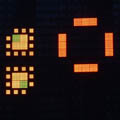
|

|
Wolfram's Rule 110
In this experiment, the BioWall develops patterns produced
by evolution according to Wolfram's Rule 110. The visitor
can modify any cell state of the first column and thus evolve
the configuration of the patterns.
|
| 













